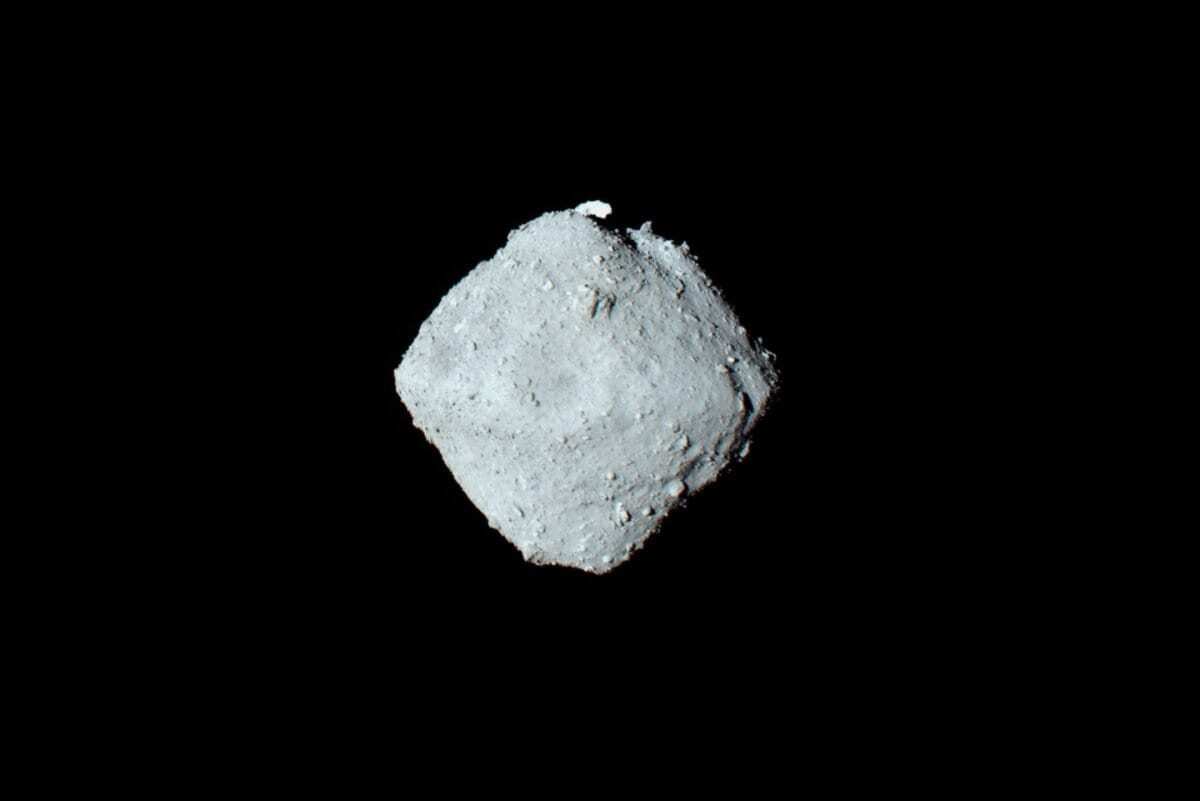After an explosive device on the Hayabusa2 spacecraft fired a copper cannonball a bit larger than a tennis ball into the near-Earth asteroid Ryugu, creating an artificial impact crater on it, researchers understand more about the asteroid’s age and composition, they say.
The results may inform efforts to make surface age estimations of other rubble-pile asteroids. When Hayabusa2 launched an orbital bombardment upon the tiny world of Ryugu – a rocky, nearby asteroid orbiting between Earth and Mars – it was to expose the pristine subsurface material for remote sensing and sampling.
The impact produced by Hayabusa2’s Small Carry-on Impactor (SCI) blasted a nearly 10-meter-wide hole into Ryugu’s rubble-pile surface. The result was an artificial crater and accompanying plume of ejected material, which was captured in detail by the spacecraft’s cameras. The number and size of craters that pepper asteroids like Ryugu can be used in further studies to determine the age and properties of asteroid surfaces.

However, these studies require a general understanding of the nature of how such craters form – the crater scaling laws – which are often derived from laboratory experiments or numerical simulations. Here, Masahiko Arakawa and colleagues use observations from the SCI impact experiment to test crater scaling laws and characterize the surface of Ryugu. Arakawa et al. describe the artificial impact crater as semicircular with an elevated rim, a central pit, and an asymmetric pattern of ejecta, perhaps due to a large boulder buried near the impact location.
The results suggest that the crater grew in the gravity-dominated regime, where crater size is limited by the local gravitational field, a finding that has implications for surface age estimations of rubble-pile asteroids, the authors say.
Based on existing models, two estimates of the surface age of Ryugu have been obtained, and the authors’ conclusions of how the SCI crater was formed support the younger age estimate, they say. What’s more, Arakawa et al. suggest that the surface of Ryugu is composed of a cohesionless material similar to loose sand.
AMERICAN ASSOCIATION FOR THE ADVANCEMENT OF SCIENCE
Header Image Credit – – DARTS archive







